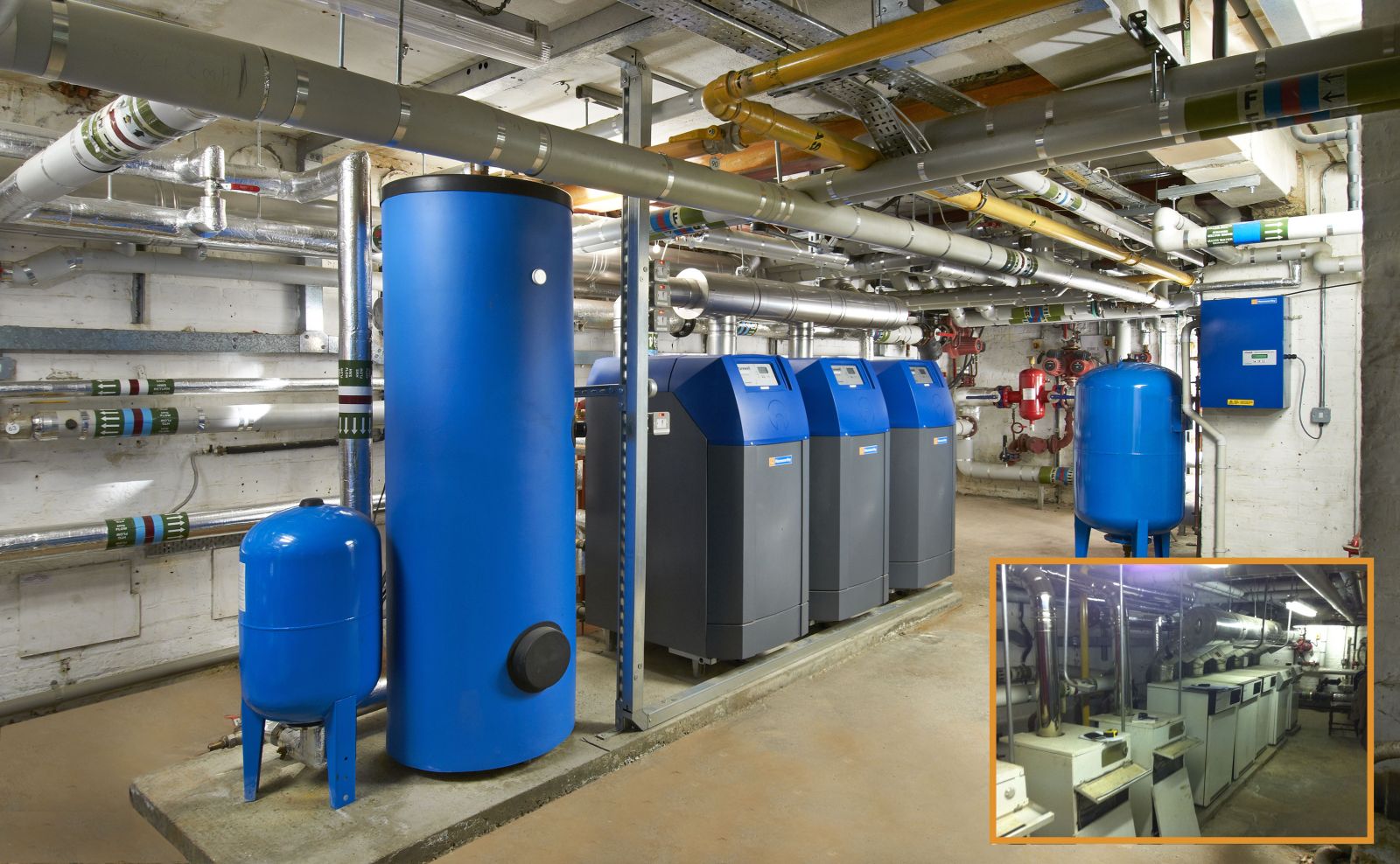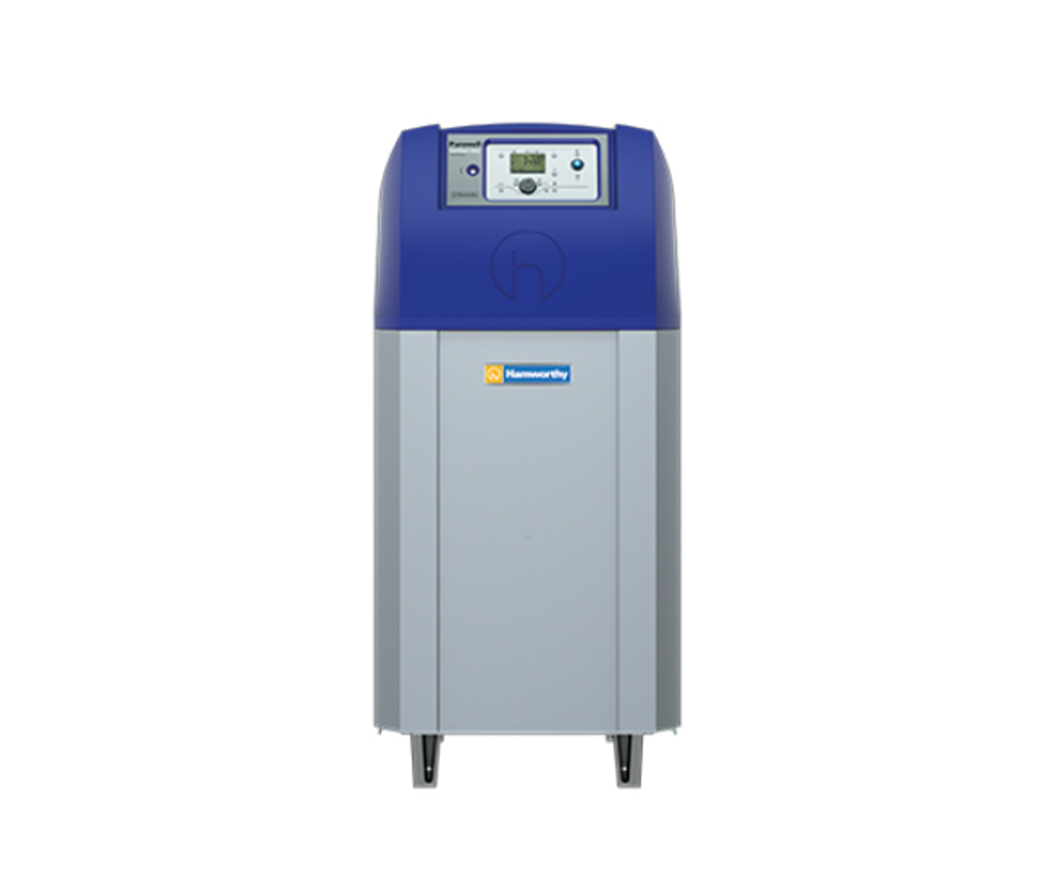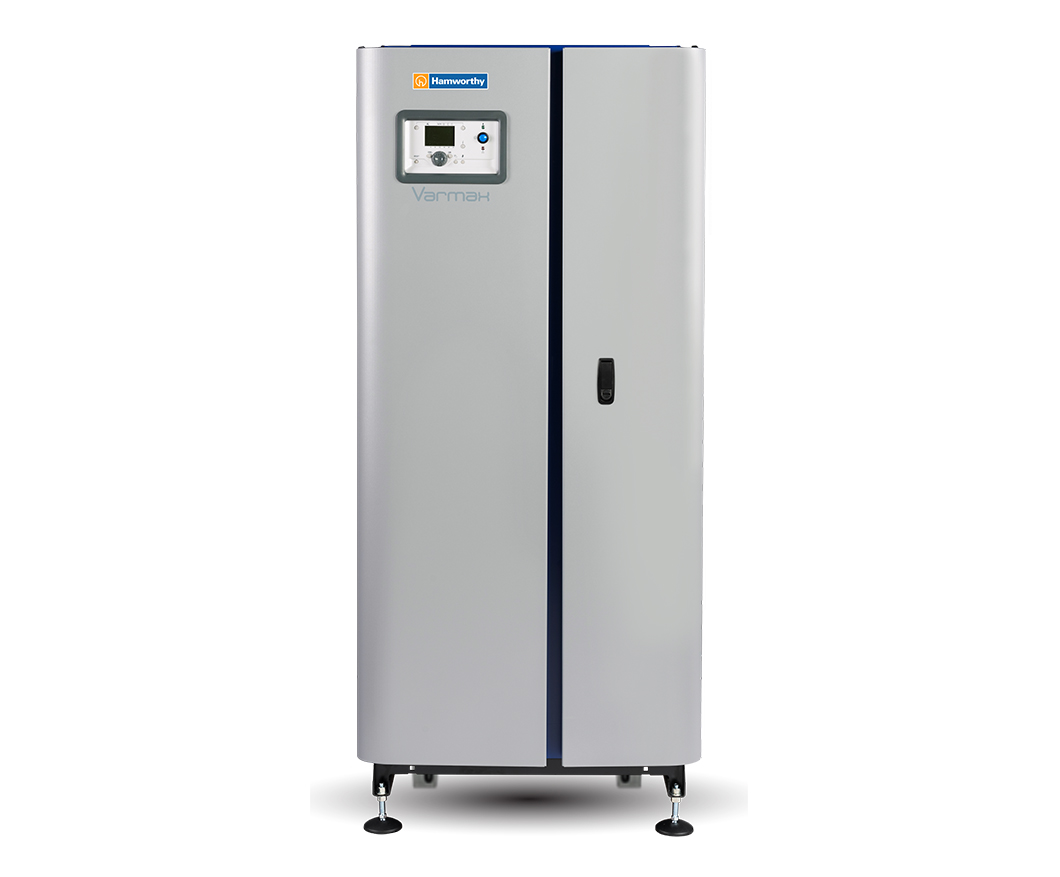Hamworthy Heating - Refurb or replace? What to consider when upgrading your plant room

Purewell Variheat boilers installed in a plant room refurb at a nursing home. They were able to reduce the number of boilers and use a calorifier for hot water heated by the new boilers.
You don’t always have the budget or time to carry out a full plant room replacement, but there are plenty of ways to increase the efficiency of your system in a cost and time effective manner. Here we take you through the key areas to focus when you are refurbishing or repairing your building’s hot water and heating system.
You will either have a closed system or an open vented system and this will determine the amount of work required and the products you need.
Older heating systems are often open vented, which will have downsides – including risk of pollutants and lack of pressure – and many boiler manufacturers stipulate their products to be installed in a sealed system to protect your boilers and ensure system cleanliness. If you choose to replace it with a sealed system you will have more flexibility for the future and can save time and space, and improve monitoring in the long term.
Sizing a hot water or heating system for a commercial premise should be based on projected peak demand and patterns of peak usage. The building use may have changed, meaning the current equipment is undersized or oversized. It may be that you can make better use of your current products. For example, your existing boiler may already have spare capacity for a calorifier – which is cheaper and simpler to install than a direct fired water heater. Or is new equipment required to comply with regulations and reduce energy?
The type of flue you have might determine what direction you take your refurbishment. The Energy Related Products (ErP) Directive has effectively eliminated most high efficiency non-condensing boilers up to 400kW and you may need to change from an atmospheric boiler to a condensing boiler. This also requires you to line your existing flue or install a replacement flue to cope with the condensate.
Your boiler is likely to be the main component of your refurbishment and you will need to consider the job that it needs to do – particularly the demand for heating – as well as the fuel type. You will also need to consider the amount of space that you have.
There are many boilers and water heaters that are suited to refurbishment projects:
|
The Purewell Variheat mk2 boiler is suitable for both sealed and open vented systems:
|
 |
 |
The Varmax boiler needs less supporting equipment:
|
|
Finally, the Dorchester DR-LL atmospheric water heater is ideal for replacing older atmospheric water heaters:
|
.jpg) |
There are two sides to any heating system. Ideally your primary, boiler circuit should be sealed, but your secondary heating system circuit can remain open provided you separate the two sides with appropriate hydraulic separation such as a plate heat exchanger or low loss header. This will ensure flow, resistance and temperature can be maintained around the primary circuit, as well as guarding against the transference of sludge, dirt and even air from the secondary, open system. Thus protecting your investment in new boilers.
Low loss headers and plate heat exchangers are often supplied as a package with pipework kits and will be correctly sized to suit that boiler’s connections.
Identifying the appropriate hydraulic separation system will allow you to replace your open vented boiler with a sealed system including a modern condensing boiler and keep it protected from corrosion, dirt and air, as well as allowing you to maintain efficient pressure and flow rate through the boiler.
Whatever the scope of your system overhaul, you can get expert support at any time from Hamworthy. We’re happy to help you with anything from sizing your system and identifying the most cost-effective approach to upgrading your system, and from product selection to long-term spare parts availability.
*Subject to survey. New draught diverter must be fitted.

.png)

.png)
.png)
.png)
.png)